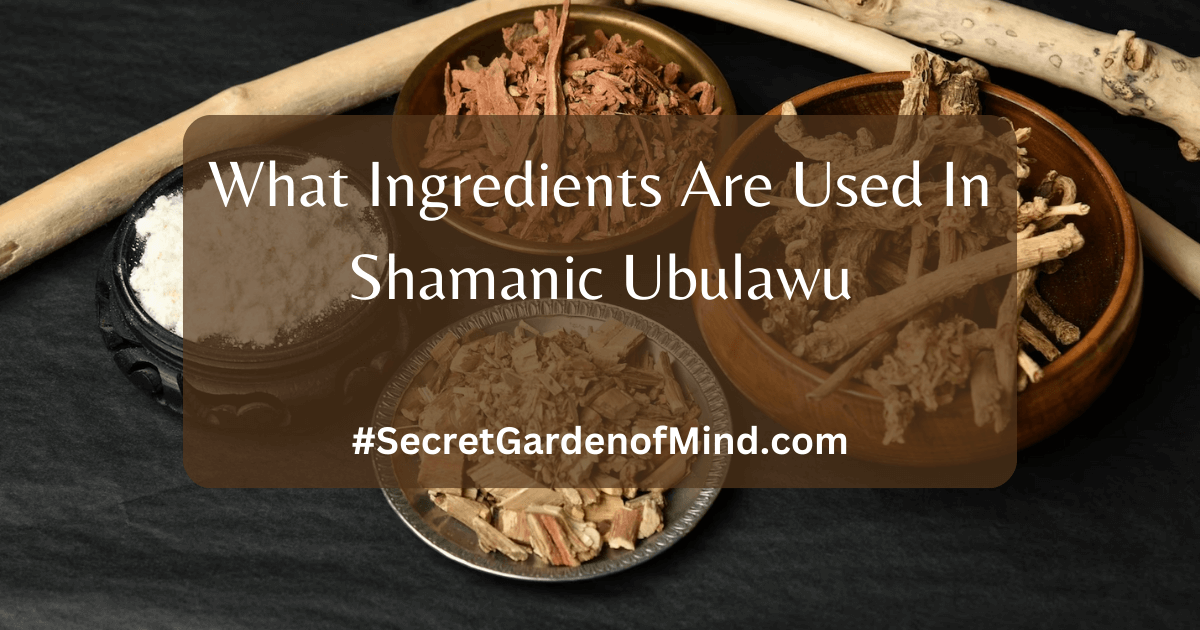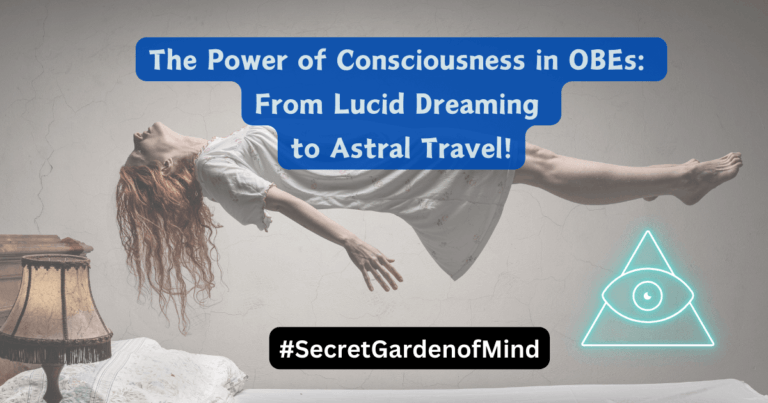What Ingredients Are Used In Shamanic Ubulawu

Ubulawu, a traditional herbal remedy, has been used for centuries in various cultures to address a wide range of health conditions. This article explores the ingredients that make up this potent concoction, drawing from reliable research and the referenced PDF. Understanding the components of Ubulawu can shed light on its potential therapeutic benefits.
In today’s post, we will explore the Ingredients in Ubulawu and find out more about this mysterious Shamanic blend.
What Ingredients Are Used In Shamanic Ubulawu
*Some ingredients in Ubulawu are as follows;
- Silene Capensis
- Synaptolepis kirkii
- Dianthus Mooiensis (Carnation)
- Acacia caffra (Cat Thorn)
- Clerodendrum glabrum (Wild Jasmine)
- Cussonia spicata (Cabbage Tree).
- Diospyros lycioides (Bluebush)
- Syzygium cordatum (Water Berry)
Other Possible Ingredients Include;
- Acacia elephantorrhiza
- Rhoicissus tridentata
- Hippobromus pauciflorus (L.f.) Radlk.,
- H. integrifolius.
- Rubia petiolaris
- Myosotis afropalustris
- Nymphaea nouchali
- C. mimosoides
*Note I am not from Africa. Really to be honest I’ve only learnt about Ubulawu online. I have never tried any kind of Ubulawu concoction (as of yet) but it is definitely of interest to me. Mostly because of its potential to induce Lucid Dreams. I hope to update this article in the future if/when I can find out more but this is for now mostly the information I’ve been able to find out. [You can find an extensive list on this forum post HERE]
Basically, herbal remedies have long been an integral part of traditional medicine systems worldwide, and Ubulawu stands as a testament to the profound wisdom of ancient healing practices. This herbal concoction, known for its therapeutic properties, has garnered attention due to its wide-ranging applications in diverse cultures.
To uncover the secrets behind its efficacy, we delve into the ingredients that compose Ubaluwu, referencing the scholarly work by Sobiecki (2020) and other online resources.
Ubulawu: An Overview
Ubaluwu, also referred to as Ubahlolanyo, is a traditional remedy originating from the Zulu and Xhosa cultures of Southern Africa. It is believed to hold profound medicinal powers, and its usage spans centuries. The remedy is administered orally, often in the form of a decoction, and has been employed to treat ailments such as gastrointestinal issues, respiratory conditions, and inflammatory diseases.
*Note as mentioned there is much I don’t know about Ubulawu. In fact, I’ve just had to edit this article because I’ve been spelling it Ubalawu (It’s Ubulawu) but anyway, I see there are a couple of videos on Youtube but none in English.
If anyone reading this article would like to reach out and share more information this would be appreciated. So…
The Ingredients of Ubaluwu
The composition of Ubaluwu is multifaceted, combining various plant materials with specific therapeutic properties. Sobiecki’s research provides insights into the key ingredients utilized in the formulation of Ubulawu. The document actually lists many plants which I have listed above
*Note: These are only the ingredients I’ve been able to find out. Possibly there are others too. Anyway…
Acacia caffra (Hook.)
Commonly known as the “Cat Thorn” or “Common Hook Thorn,” Acacia caffra is a tree native to Southern Africa. The bark of this plant is used in Ubulawu and has demonstrated anti-inflammatory and analgesic properties. Its inclusion is attributed to its potential to alleviate pain and address various inflammatory conditions.
According to a study published in the South African Journal of Botany (2012), Acacia caffra bark was found to contain alkaloids, flavonoids, and tannins, which may contribute to its medicinal properties.
In traditional medicine, Acacia caffra has been used for its anti-inflammatory and analgesic effects. The bark is often decocted to make a medicinal tea that is believed to help alleviate pain and reduce inflammation in conditions like arthritis and joint pain.
*Note: I am not 100% sure if this is actually used in Ubulawu. Acacia elephantorrhiza (Elephant Thorn), another Mimosa plant I see from another source is used. I was going to remove and replace this section. I know A. Caffra is used in Zulu love potions so maybe this is used. There are actually several Acacia subspecies that are possibly used.
Clerodendrum glabrum (Gürke)
Clerodendrum glabrum, or “Wild Jasmine,” is a flowering plant found in regions of Africa. In Ubulawu, its roots are utilized, as they possess antifungal and antibacterial properties. This component contributes to the remedy’s effectiveness in combating microbial infections.
In a blog post on Phytoalchemy (2018), it is mentioned that the roots of Clerodendrum glabrum contain antimicrobial compounds, making them valuable for addressing bacterial and fungal infections.
The traditional use of Clerodendrum glabrum includes treating skin conditions, digestive disorders, and respiratory ailments. The antimicrobial properties of this plant are believed to support the body’s immune system and assist in the management of infections.
Cussonia spicata Thunb.
Known as “Cabbage Tree” or “Common Cabbage Tree,” Cussonia spicata is a tree native to various parts of Africa. The leaves and roots of this plant are included in Ubaluwu, as they are believed to provide anti-inflammatory benefits and aid in wound healing.
According to the same Phytoalchemy blog post, Cussonia spicata has anti-inflammatory properties, and the leaves are often applied topically to wounds to aid in healing.
Additionally, a study published in the South African Journal of Botany (2012) found that Cussonia spicata leaves contain flavonoids and tannins, which are known for their antioxidant and anti-inflammatory effects.
Diospyros lycioides Desf.
Diospyros lycioides, commonly called “Bluebush,” is a small tree or shrub indigenous to Southern Africa. Its bark is a valuable ingredient in Ubulawu due to its antioxidant properties and potential role in promoting digestive health.
According to a study published in the South African Journal of Botany (2012), Diospyros lycioides bark was found to contain compounds with antioxidant activity.
In traditional medicine, Diospyros lycioides bark is utilized to address various digestive issues, such as stomachaches and indigestion. Its antioxidant properties may contribute to its ability to support digestive health.
Silene Capensis (Undulata)
Silene Capensis, commonly known as “Undulata,” is a plant native to South Africa. It is a significant ingredient in Ubaluwu and has gained attention for its potential psychoactive properties.
The plant is renowned for its traditional use as a dream-enhancing herb among the Xhosa people.
Traditional Use and Psychoactive Properties
In traditional African medicine, Silene Capensis is used in ritualistic contexts for its purported ability to induce vivid and meaningful dreams. It is often prepared as a decoction or infusion and consumed before sleep to enhance dream recall, promote lucid dreaming, and facilitate communication with ancestral spirits.
The psychoactive properties of Silene Capensis have attracted the interest of researchers, and studies have been conducted to investigate its potential effects on the brain.
Some research suggests that the plant may interact with the GABA receptors in the brain, potentially influencing the dream experience. S. Capensis is readily available online from many sources and is maybe the stand-out ingredient in Ubaluwu.
Dianthus Mooiensis
Dianthus mooiensis is a species of Dianthus, commonly known as “Carnation.” While there is limited information available on its specific role in Ubaluwu, Carnation plants are well-known for their ornamental and medicinal uses.
Medicinal and Cultural Significance
In traditional medicine systems worldwide, different species of Dianthus have been utilized for their potential health benefits. Dianthus plants have been traditionally employed to treat various ailments, including digestive issues, respiratory conditions, and stress-related disorders. However, specific information about Dianthus mooiensis and its application in Ubaluwu is scarce. Although, it is definitely used in this shamanic blend.
Synaptolepis kirkii
Synaptolepis kirkii, the Dream Rhizome is a plant native to certain regions in Africa, including Tanzania and Mozambique. It is a lesser-known but intriguing ingredient in Ubaluwu, known for its potential psychoactive effects.
Psychoactive Properties and Traditional Use
Among the Zulu and Xhosa cultures, Synaptolepis kirkii has been used in traditional rituals for its alleged psychoactive properties. It is sometimes referred to as “Uvuma-omhlope” or “White ways/paths.”
The plant is often prepared as a decoction and consumed to induce altered states of consciousness and facilitate spiritual experiences. The psychoactive properties of Synaptolepis kirkii are attributed to its potential interaction with the brain’s neurotransmitters, particularly dopamine.
It is believed to act as a mild relaxant and stimulant, leading to heightened awareness and dream-like experiences.
The Usage of Mukanya Kude (Acacia xanthophloea) in Ubulawu
Mukanya Kude, known scientifically as Acacia xanthophloea, holds a significant place in the realm of Ubulawu, a traditional African herbal remedy. This distinctive tree is not only valued for its medicinal properties but also for its spiritual and cultural significance, making it a key ingredient in certain Ubulawu preparations.
1. Medicinal Properties:
In the context of Ubulawu, Mukanya Kude’s medicinal properties are often harnessed to address specific health conditions. Traditional healers and herbalists may use various parts of the tree, such as the bark, leaves, or roots, for their potential therapeutic benefits. Mukanya Kude has been historically employed in African traditional medicine to alleviate fever symptoms, leading to its colloquial name, the “Fever Tree.”
2. Enhancing Dream Experiences:
Mukanya Kude, with its rich cultural history, is renowned for its potential to influence dream experiences. In certain African cultures, Ubulawu preparations that include Mukanya Kude are used to enhance dreams and induce vivid, meaningful, or spiritual experiences during sleep. The tree’s association with dream enhancement is believed to promote communication with ancestral spirits and facilitate insights into one’s life journey.
3. Spiritual and Cultural Significance:
Beyond its medicinal uses, Mukanya Kude holds spiritual and cultural significance in many African communities. The tree is often regarded as a symbol of protection, and its presence near homes and sacred spaces is believed to ward off negative energies. Moreover, the tree is associated with certain rituals and ceremonies, emphasizing its importance in traditional healing practices.
4. Sacred Spaces and Rituals:
Mukanya Kude’s association with sacred spaces and rituals makes it a sought-after ingredient in Ubulawu preparations used during spiritual ceremonies and healing rituals. The tree’s unique appearance and characteristics contribute to the reverence it receives, further reinforcing its use in cultural and spiritual contexts.
Also, another ingredient that is worth mentioning is Ubhubhubhu.
Ubhubhubhu (Helinus integrifolius) in Ubulawu
Ubhubhubhu, scientifically known as Helinus integrifolius, is a plant species that holds significant cultural and spiritual importance in African traditional medicine, particularly in the practice of Ubulawu. Revered for its potent properties, Ubhubhubhu is believed to possess the ability to facilitate profound experiences and insights, making it a key ingredient in certain Ubulawu preparations.
This is a perennial herbaceous plant that belongs to the family Melastomataceae. It is native to various regions of Southern and Eastern Africa, where it thrives in forested areas, savannas, and grasslands.
Among the key attributes associated with Ubhubhubhu in Ubulawu is its capacity to enhance dreams and induce altered states of consciousness during sleep. Traditional healers often utilize Ubhubhubhu in specific preparations intended to bring clarity to dreams, connect with ancestral wisdom, and gain spiritual guidance.
The Synergy of Shamanic Ubulawu
The amalgamation of these diverse ingredients creates a potent herbal remedy with a synergistic effect. The combined properties of anti-inflammatory, antimicrobial, and analgesic characteristics offer a holistic approach to tackling various health conditions. The traditional knowledge passed down through generations has contributed to the precise proportions and preparation methods, ensuring the effectiveness of Ubulawu.
How To Make Ubaluwu: A Step-by-Step Guide
Ubaluwu, a traditional African herbal remedy, holds a rich history of medicinal use in various cultures. The preparation of Ubaluwu involves a thoughtful combination of specific plant materials, each contributing its unique therapeutic properties to the final concoction.
Although the precise proportions and methods may vary among different communities, here is a general step-by-step guide on how to make Ubaluwu:
Possible Ingredients:
- Acacia caffra (Cat Thorn) – Bark
- Clerodendrum glabrum (Wild Jasmine) – Roots
- Cussonia spicata (Cabbage Tree) – Leaves and Roots
- Diospyros lycioides (Bluebush) – Bark
- Syzygium cordatum (Water Berry) – Roots
- Silene Capensis (Undulata) – Roots or plant parts
- Synaptolepis kirkii – Plant parts
Instructions:
- Harvesting and Drying: Gather the specified plant parts, ensuring they are fresh and free from contamination. In the case of roots, carefully dig them up, and for bark and leaves, gently remove them from the plant. Allow the harvested materials to air dry in a shaded and well-ventilated area to preserve their potency.
- Grinding: Once the plant materials are thoroughly dried, grind them into a coarse powder using a mortar and pestle or an electric grinder.
- Proportions: In traditional Ubaluwu preparation, specific ratios of each plant material are used to achieve a balanced blend. These proportions may be passed down through generations and are often kept as valuable cultural knowledge.
- Mixing: Combine the powdered plant materials according to the desired recipe, ensuring uniform distribution.
- Decoction: To extract the medicinal compounds from the powdered blend, prepare a decoction.
– In a pot, add a suitable amount of water (usually based on the number of servings) and mix in the Ubaluwu powder.
– Slowly bring the mixture to a boil, then reduce the heat to a simmer.
– Allow it to simmer for approximately 15 to 30 minutes, ensuring the water reduces but does not boil away completely. - Straining: After simmering, strain the decoction through a fine mesh strainer or cheesecloth to remove any solid plant particles, obtaining a clear liquid.
- Storage: Once the Ubaluwu decoction has cooled, store it in a clean, airtight container away from direct sunlight and heat. It is recommended to keep it in a cool, dark place to preserve its potency.
- Dosage and Use: The dosage and usage of Ubaluwu may vary depending on the intended purpose and the traditions of the community. It is essential to consult with experienced practitioners or traditional healers to determine the appropriate dosage and how to administer the remedy.
*Warning*
Ubulawu preparation is a mindful and culturally significant process, blending the knowledge of nature’s gifts with traditional wisdom. While the precise preparation may vary across communities, the essence remains the same—an herbal concoction with the potential to address a wide range of health conditions and contribute to the well-being of individuals in the communities where it is used.
You should consult with a Xhosa or Zulu Shaman before attempting to create this yourself
Where To Buy Ingredients
I would recommend 3 different sources for ingredients – eBay, Etsy, and WakingHerbs.com (See Links below).
- Sinene Capensis (eBay)
- Synaptolepis Kirkii
- Acacia caffra (can’t find). (Acacia xanthophloea available at WakingHerbs)
- Clerodendrum glabrum (can’t find).
- Cussonia spicata (can’t find).
- Diospyros lycioides (can’t find online).
- Syzygium cordatum (can’t find
- Dianthus Moonei (can’t find it online).
Check out the full range of Dream Herbs Including the ingredients above at WakingHerbs.com
Also, check out this DIY Ubulawu kit that you can buy over at ETSY [Click HERE]
Conclusion
Ubaluwu stands as a remarkable example of the richness of traditional medicine systems, drawing upon the bountiful resources nature has to offer. With its diverse array of ingredients, this traditional remedy continues to pique the interest of researchers and herbalists alike.
While modern scientific studies are necessary to validate the claims and further understand the mechanisms of action, Ubaluwu remains an invaluable cultural heritage that deserves exploration and respect.
Disclaimer: The information provided in this article is based on the referenced research by Sobiecki (2020). Please consult a healthcare professional before using any herbal remedy, including Ubaluwu, for therapeutic purposes.



amazon bean products bean products accent pillows bean products bean bags bean products bed pillows bean products bolster bean products chicago bean products coupon code bean products decorative accent pillows bean products shredded foam bean products usa bean products yoga bean products zafu benefits of meditation for adhd best type of meditation for adhd buddhist meditation for adhd Dream Diaries Dream Master energy healing Entrainment machine how to lucid dream Law of Attraction Laxman innertainment Light and Sound Machine Light and Sound Meditation Mind Machine lucid dream herbs Manifestation meditation meditation alzheimer meditation alzheimer prevention meditation alzheimers meditation classes adhd meditation cure adhd meditation dementia meditation for adhd adults meditation for adults with adhd Meditation for healing sports injuries meditation for memory loss meditation memory meditation memory loss Mindplace Procyon mr bean new products remote viewing amplifier remote viewing baby monitor remote viewing books pdf remote viewing experiments


